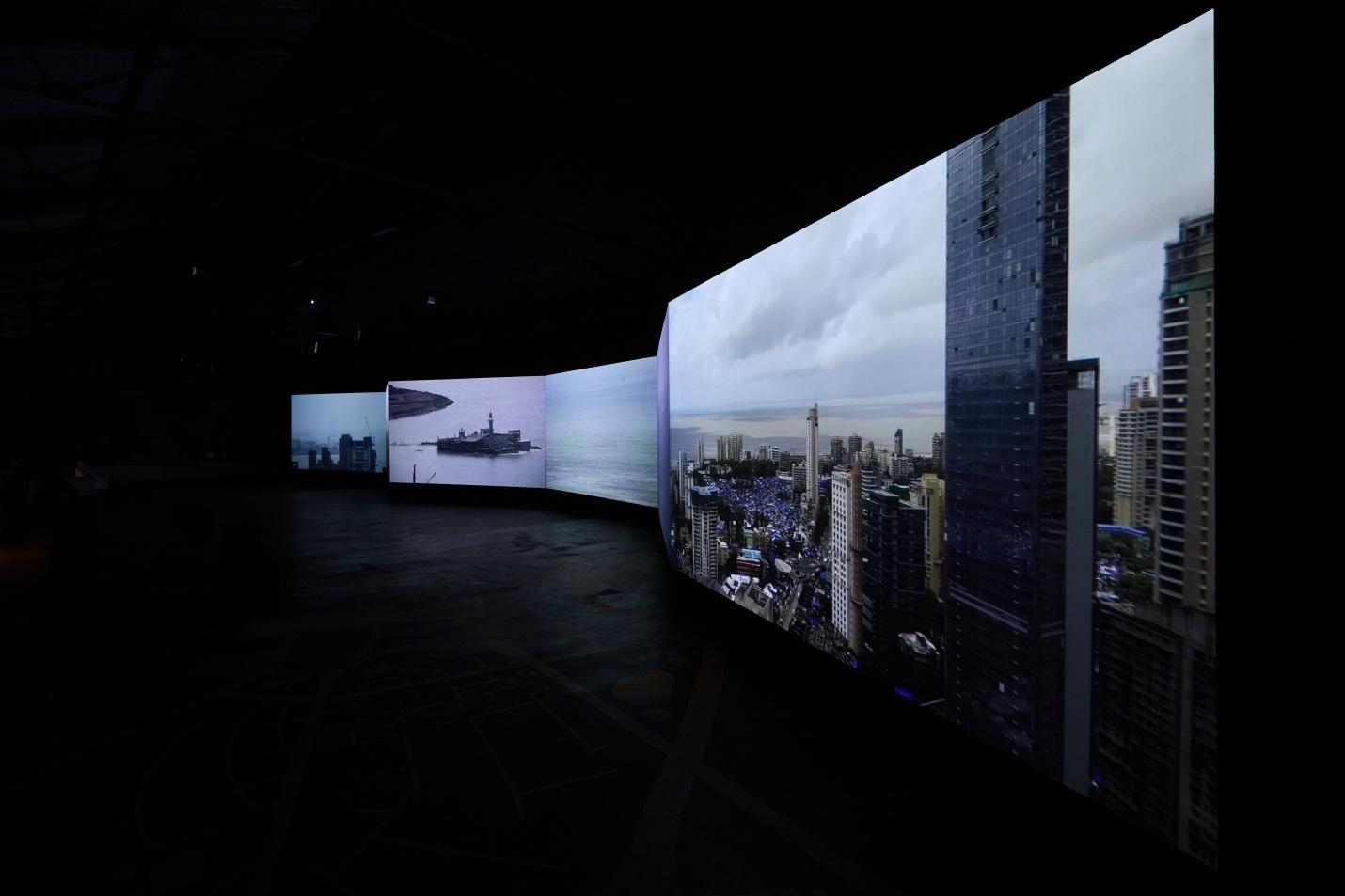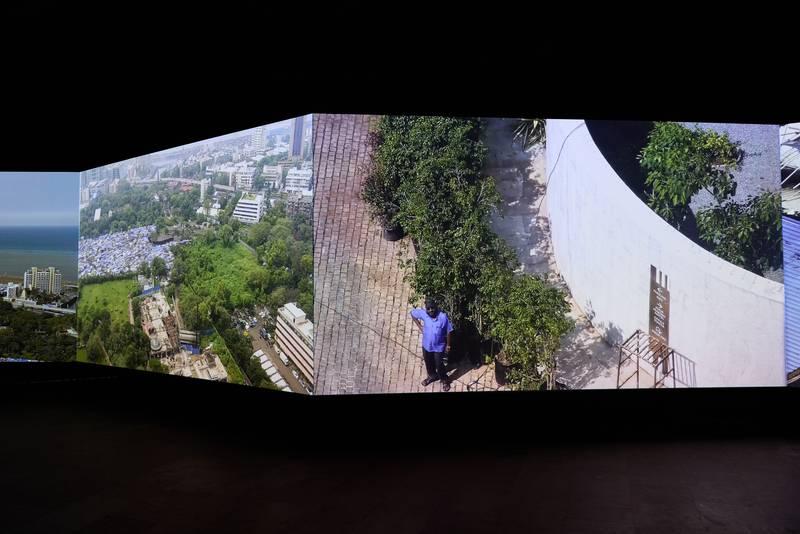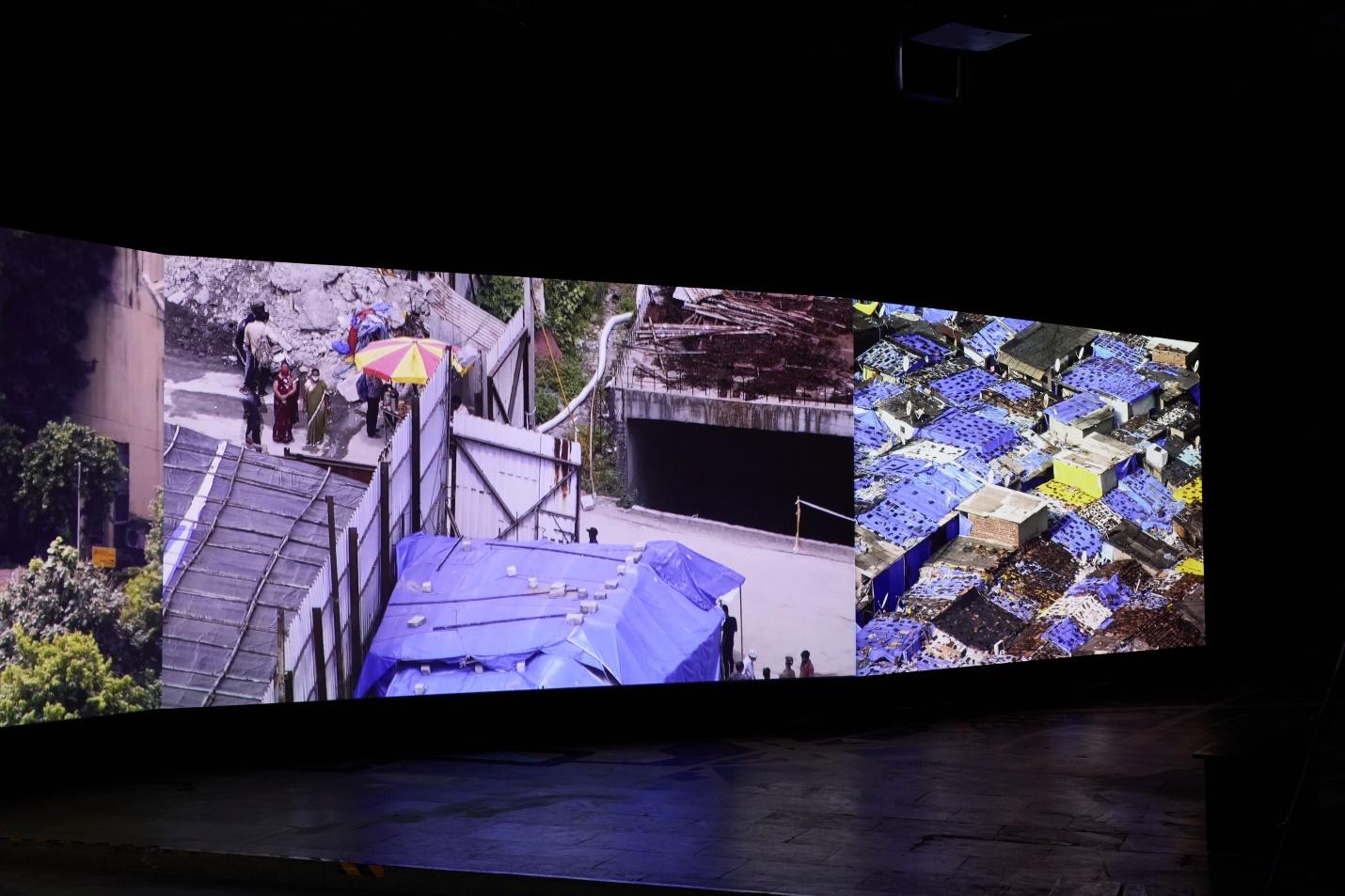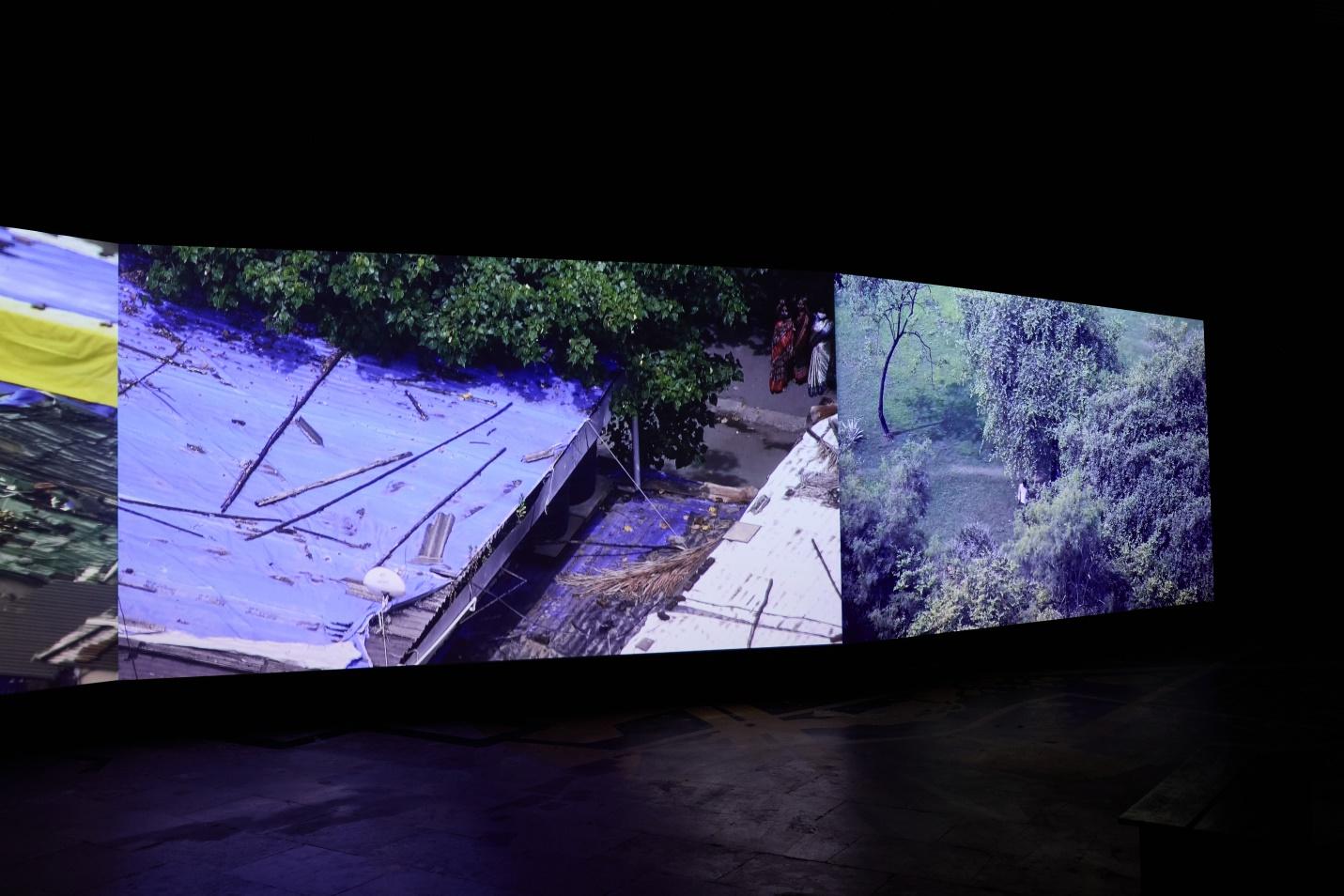The Infinite Companion: Bombay Tilts Down by CAMP
What are the visions of a city under arrest? Shot during the Covid-19 pandemic, Bombay Tilts Down (2022), a seven-channel film by the collaborative studio CAMP presents vertical landscape views, encompassing the sky and sea to land and its varied details. Previously shown at the Kochi Muziris Biennale 2022–23, Bombay Tilts Down was recently a part of Experimenter gallery’s programming for the Mumbai Gallery Weekend 2024. Made using CAMP’s well-known, critically re-appropriated weapon of choice—a lowering and tilting CCTV camera that picks out the invisible sightlines of a complex social imaginary—the work is a profound exploration of Mumbai's urban landscape through the lens of working-class perspectives. Presented at the historic Sassoon Docks of Mumbai, Bombay Tilts Down sought to reframe cultural histories of the city through voices shaped by the landscape, as well as practices of physical occupation of space—where workers, labourers and casual strollers, along with fragments of construction material, combine to mark their presence in the unbuilt city. Such visions are usually erased in the aspirational, polished and finished looks of high-rise neighbourhoods that are set to populate the urban dweller’s visionscape over the next few decades or so, until the sea washes in.

The installation view of Bombay Tilts Down shows the expansive cityscapes and skyline of the city.
The installation set up a seven-channel “environment”, capturing distinct, “faceted” views from a CCTV camera atop a thirty-five-story building in south central Mumbai’s Dr E. Moses Road during the COVID-19 pandemic. As the camera gradually tilts, it transitions from observing the city's skies to the vast Arabian Sea, accompanied by a voiceover featuring working-class poets expressing their discontent through wit and humour—“From bricks we made palaces that now touch the sky... we gave them pleasure and peace,” even as “…our housing still remains in question.” As the camera takes in the forms of people gathered in pools around corners and rooftops, many appear to stare back at us. Including passages from the works of K.A. Abbas, Narayan Surve and others, the pulsing soundtrack, designed by BamBoy (Tushar Adhav), reclaims the skyline from its false patina of glamour to remind us of the many subterranean histories of Mumbai’s cultural landscape, especially its radical Dalit literary movements from the past, when poets like Surve laid visceral claim to the city’s scarred grounds.

Through their signature interlocution of moving images captured through CCTV cameras, the work interpolates urban views with shots of people walking around or working on these sites.
This counterintuitive insight—of writing subterranean messages upon a vertically propelled socio-urban vision that seeks to swallow the sky over the city—is accompanied by a provocative move to imagine lines of vision that can collapse such hierarchies of thinking about urban space and infrastructure. Of course, this radical reimagining is not suggested to emerge overnight, and the filmmakers ironically suggest that the sea might wash the slate clean on our behalf and fashion a new ground.

As CAMP’s perspectival camera tilts from the skyline to the rooftops of the buildings, the people on screen seem to stare back into the camera.
Looking out from the rooftops, especially the vacant spaces produced by the dense architectures of secured, middle-class housing and workplaces, one can imagine a free runner from Surve’s poem speaking to himself:
“After running between trains,
“And getting soaked on the roads,
“After the onset of a new darkness,
“And having been blinded since childhood,
“Mumbai became his infinite companion.”

The installation reflects on a multifaceted vision of the urban city, dismissing a universal patina of glamour away from Mumbai.
To learn more about CAMP’s work, read Ankan Kazi’s reflections on the film Al Jaar Qabla al Daar (The Neighbour Before the House, 2009–11) and Gulmehar Dhillon’s essay on their installation A Photogenetic Line (2019).
All images are installation views of Bombay Tilts Down (2022), at the Sassoon Docks Warehouse. Image courtesy of CAMP and Experimenter.




